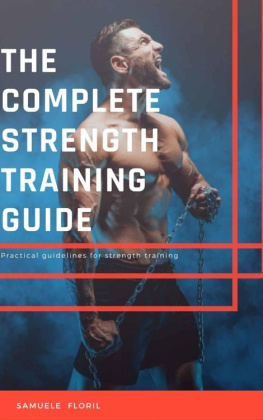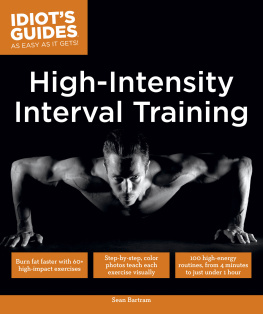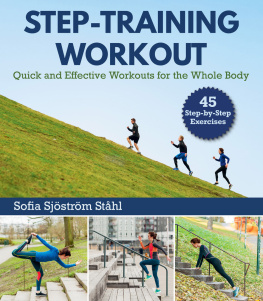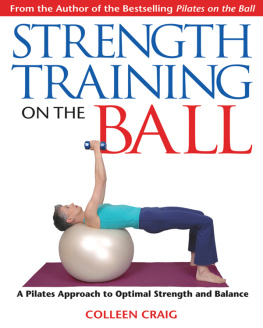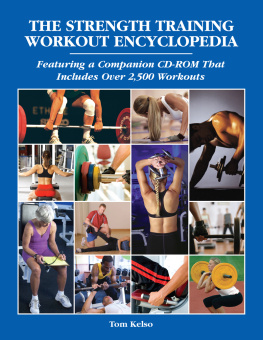Copyright 2019 by Health Class. All rights reserved.
This document is geared towards providing exact and reliable information with regards to the topic and issue covered. The publication is sold with the idea that the publisher is not required to render account, officially permitted, or otherwise, qualified services. If the advice is necessary, legal or professional, a professional figure should be ordered.
From the Declaration of Principles which was accepted and approved equally by the Committee of the American Bar Association and the Committee of Publishers and Associations.
In no way is it legal to reproduce, duplicate, or transmit any part of this document in either electronic means or in printed format. Recording this publication is strictly prohibited and any storage of this document is not allowed unless with a written permission from the publisher. All rights are reserved.
The information provided herein is stated to be truthful and consistent, in that any liability, in terms of inattention or otherwise, by any usage or abuse of any policies, processes, or directions contained within is the solitary and utter responsibility of the recipient reader. Under no circumstances will any legal responsibility or blame be held against the publisher for any reparation, damages, or monetary loss due to the information herein, either directly or indirectly.
Respective authors own all copyrights not held by the publisher.
The information herein is offered for informational purposes solely, and it is universal. The presentation of the information is without contract or any type of guarantee assurance.
The trademarks that are used are without any consent, and the publication of the trademark is without permission or backing by the trademark owner. All trademarks and brands within this book are for clarifying purposes only and are owned by the owners themselves, not affiliated with this document.
Disclaimer:
You must get your physicians approval before beginning this exercise program. These recommendations are not medical guidelines but are for educational purposes only. You must consult your physician before starting this program or if you have any medical condition or injury that prohibits physical activity.
The information in this report is meant to integrate, not replace, proper exercise training. All forms of exercise pose some inherent risks. The editors and publishers advise all readers to take full responsibility for their safety and know their limits. Before practicing the exercises in this book, be sure not to take risks beyond the level of your experience, aptitude, training and fitness. The exercises and dietary programs in this book are not intended as a substitute for any exercise routine or treatment or dietary regimen that may have been prescribed by your physician.
Dont lift heavy weights if you are alone, inexperienced, injured, or fatigued. Dont perform any exercise unless you have been shown the proper technique by a certified personal trainer or a certified strength and conditioning specialist. Always ask for instruction and assistance when lifting. Dont perform any exercise without proper instruction. Always do a warm-up prior to strength training and interval training.
See your physician before starting any exercise or nutrition program. If you are taking any medications, you must talk to your physician before starting any exercise program, including Bodyweight Sports Training. If you experience any lightheadedness, dizziness, or shortness of breath while exercising, stop the movement and consult a physician.
You must have a complete physical examination if you have a sedentary lifestyle, high cholesterol, high blood pressure, diabetes, overweight, or if you are over 30 years old. Please discuss all nutritional changes with your physician or a registered dietician. If your physician recommends you not to this guide, please follow your doctors orders.
Strength Training:
Practical Programming and Science of Barbell Training
By Health Class
INTRODUCTION
THE ADVANCED LIFTER
Isometric action training as an important muscle activator
Isometric training as a stimulus for strength gains
Isometric action training as a stimulus for muscle growth
TRAINING FREQUENCY AND WORK CAPACITY
Managing training intensity, volume and frequency are the key for an optimal loading and training adaptation, avoiding setback and overtraining. Training frequency is a hard term to define like intensity and volume. Some authors consider training frequency as the number of training session in a micro cycle, some of them define it as the number of training sessions per muscle group per micro cycle, or as the number of training sessions per training goal. Basically, you need to take into consideration both definitions, since you need to take into account muscle loading, central nervous system loading, endocrine system loading and the joints loading. Training frequency depends on a lot of factors like training goal, training phase, level of the athlete and work capacity. Numerous training systems are different variations of intensity, volume and frequency combos. Work capacity is also hard to define, it usually is context-dependent and has also a huge number of subtypes. Basically, work capacity is the ability to sustain training load and recover from it efficiently. You cannot develop work capacity by doing bunch of sled work and intervals. This will develop a form of aerobic power that could be used to speed up recovery between sets, but this also depends on sets type (what repetition continuum zone). Work capacity is usually something that must be looked at larger time-frame (like micro cycle), and it is something that develops over the years. Basically, you can manage to survive a given training session, but you may not actually recover from it in matter of days even weeks due to a poor work capacity. Factors that affect training frequency also affect work capacity, like muscle loading and ability to recover from it, central nervous system loading and toleration for such a work, endocrine system loading and ability to recover from it and joint loading and ability to sustain it.
The optimal training frequency depends thus on the training goals, intensity, training volume and fatigue type they develop (muscular, CNS, endocrine, joint), level of the athlete and work capacity.
THE NOVICE LIFTER
No matter what sport an athlete comes from, if he starts doing serious (not counting wellness experience here) strength training for the first time, he is novice. Be it experienced soccer player, Olympic weightlifting beginner, powerlifting beginner or beginner bodybuilder.
The main characteristics of novice lifter is that he needs very simple planning and his strength grows up rapidly. Mark Rippetotoe provides excellent explanation of all phases of the lifter in Practical Programming book, and his work will be used here as a template. Here is a short overview of novice characteristics:
Novices progress from training session to training session (Linear progression in weight - PBs)
Novices need small number of lifts
Novice will not develop overtraining that easily and on the other hand, if they do, the signs will be hard visible (which is bad).
The more advanced is the athlete, the longer is the off-period and the drastically the reduction in weight and volume is needed.
If novice start to stuck, simple an off day (with reduced weight) is enough to recover them.
If the unload is in use, the weight should be reduced for 10% and the cycle should begin once again.
If the novice shows constant need of an off day, then he should progress toward intermediate level.
The end of novice phase is marked by performance plateau occurring sometime between the third and ninth month of training, with variations due to individual differences.





